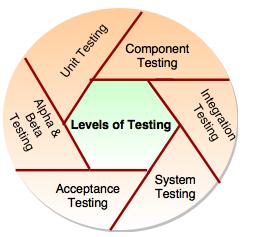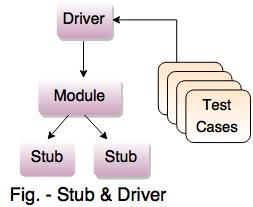Testing levels prevent overlap and repetition between the development life cycle phases.
| Stub | Driver |
|---|
| Stub is considered as subprogram. | It is a simple main program. |
| Stub does not accept test case data. | Driver accepts test case data. |
| It replaces the modules of the program into subprograms. These modules are tested by the next driver. | Pass the data to the tested components and print the returned result. |
In bottom up integration testing the components are combined from the lowest level in the program structure.

